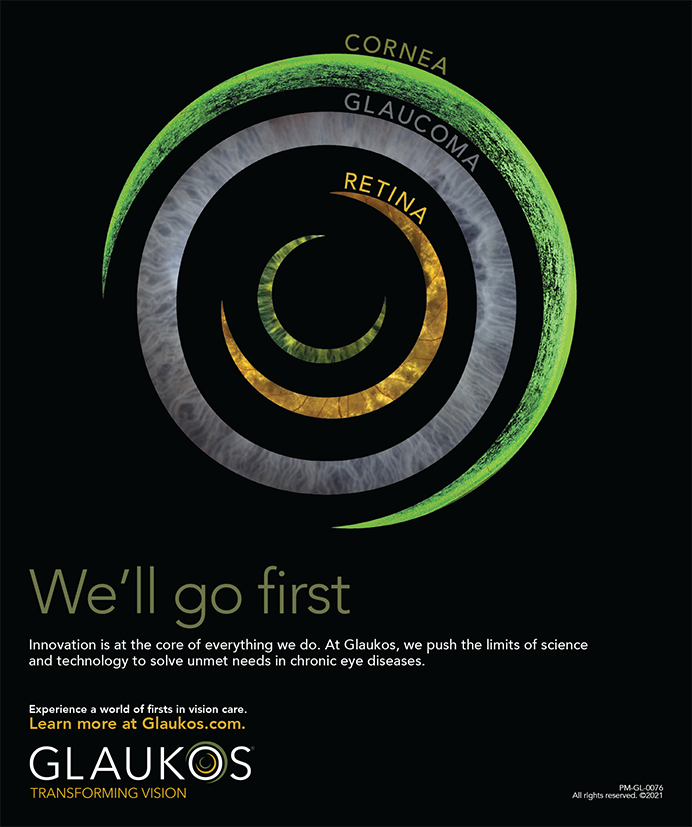Phaco technology joined forces with the breakthrough clear corneal incision more than a decade ago, establishing the gold standard for cataract surgery in the United States. The procedure became more comfortable for patients, with a faster postoperative recovery and the avoidance of sutures.
Now a mainstay of most American practices1 (including my own), sutureless cataract surgery is only as successful as the surgeon’s technique and his or her judgment. Knowing how to construct the incision to avoid a wound leak is crucial, and realizing when a single suture is occasionally warranted can make the difference between success and disaster.
ARCHITECTURE
The Best Defense Is a Great Offense
The leakage of clear corneal incisions has been implicated in the documented rise of endophthalmitis.2 Fluid can migrate from the ocular surface into the anterior chamber postoperatively, causing bacterial infection and potential vision loss. A watertight wound can help prevent this complication. The preoperative administration of current-generation fluoroquinolones and a povidone-iodine preparation is important to decrease the bacterial load on the ocular surface, eyelids, and lashes.
I strive to create a square, near-clear corneal wound, free of irregular edges, that has a tunnel of the appropriate length and width. I make a beveled incision with a single-use steel blade and “dimple down” to help create the self-sealing lip. At the end of the case, I hydrate the stroma and test the main incision as well as my paracentesis incision to make sure they are watertight.
Just One Suture Can Make the Difference
I find that the placement of a single suture is necessary in certain circumstances. When I use a suture, it is either a 10–0 nylon or more often a 10–0 Vicryl (Ethicon, Inc., Somerville, NJ) suture, which dissolves on its own and requires no cutting or removal.
I use a suture under the following circumstances:
• The wound is leaking, or the integrity of the wound is in doubt.
• The architecture is not square, and the incision is not watertight.
• The patient is immunocompromised, because he or she is undergoing chemotherapy.
• The patient is on long-term systemic steroids for a chronic medical condition.
• The patient is monocular, and I am operating on his or her only “seeing” eye. This is because a suture can prevent microorganisms on the ocular surface from accessing the anterior chamber during blinking or squeezing of the eye.
• The patient is confused, suffers from dementia or a mental impairment, or is unable to follow postoperative instructions not to touch or rub the eye.
• The patient is scheduled to undergo pars plana retinal surgery or vitrectomy relatively soon after the original cataract surgery is anticipated. There is evidence that, after phacoemulsification in such patients, the clear corneal wound can leak significantly during retinal surgery with only minimal scleral manipulation at the pars plana.3
• The patient has severe blepharitis, although I also treat the condition aggressively preoperatively.
• The patient is a nonagenarian, which may lengthen the time needed for postoperative healing.4
TECHNOLOGY IS NO MATCH FOR WISDOM
By focusing on wound architecture and remaining mindful of when placing a single suture is prudent, I have been able to keep my cataract patients free of wound leaks and subsequent infections.
Cynthia Matossian, MD, is the founder and CEO of Matossian Eye Associates, a private group practice with offices in Pennsylvania and New Jersey. She is an adjunct clinical assistant professor in the Department of Ophthalmology at the School of Medicine, Temple University in Philadelphia. Dr. Matossian may be reached at (609) 882-8833; cmatossian@matossianeye.com.
- Leaming DV.Practice styles and preferences of ASCRS members–2002 survey.J Cataract Refract Surg.2003;29(7):1412-1420.
- Taban M,Behrens A,Newcomb RL,et al.Acute endophthalmitis following cataract surgery.Arch Ophthalmol. 2005;123(5):613-620.
- Wong RW,Kokame GT,Mahmoud TH,et al.Complications associated with inadequate clear corneal wound closure during vitrectomy. Retina.2010;30(6):850-855.
- Rosen E,Rubowitz A,Assia E I.Visual outcome following cataract extraction in patients aged 90 years and older. Eye. 2009;23(5);1120-1124.


